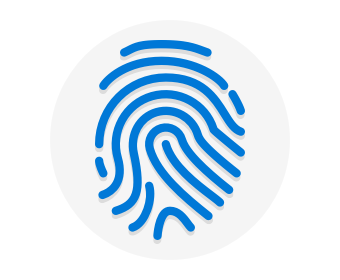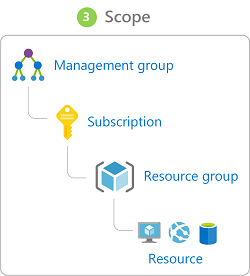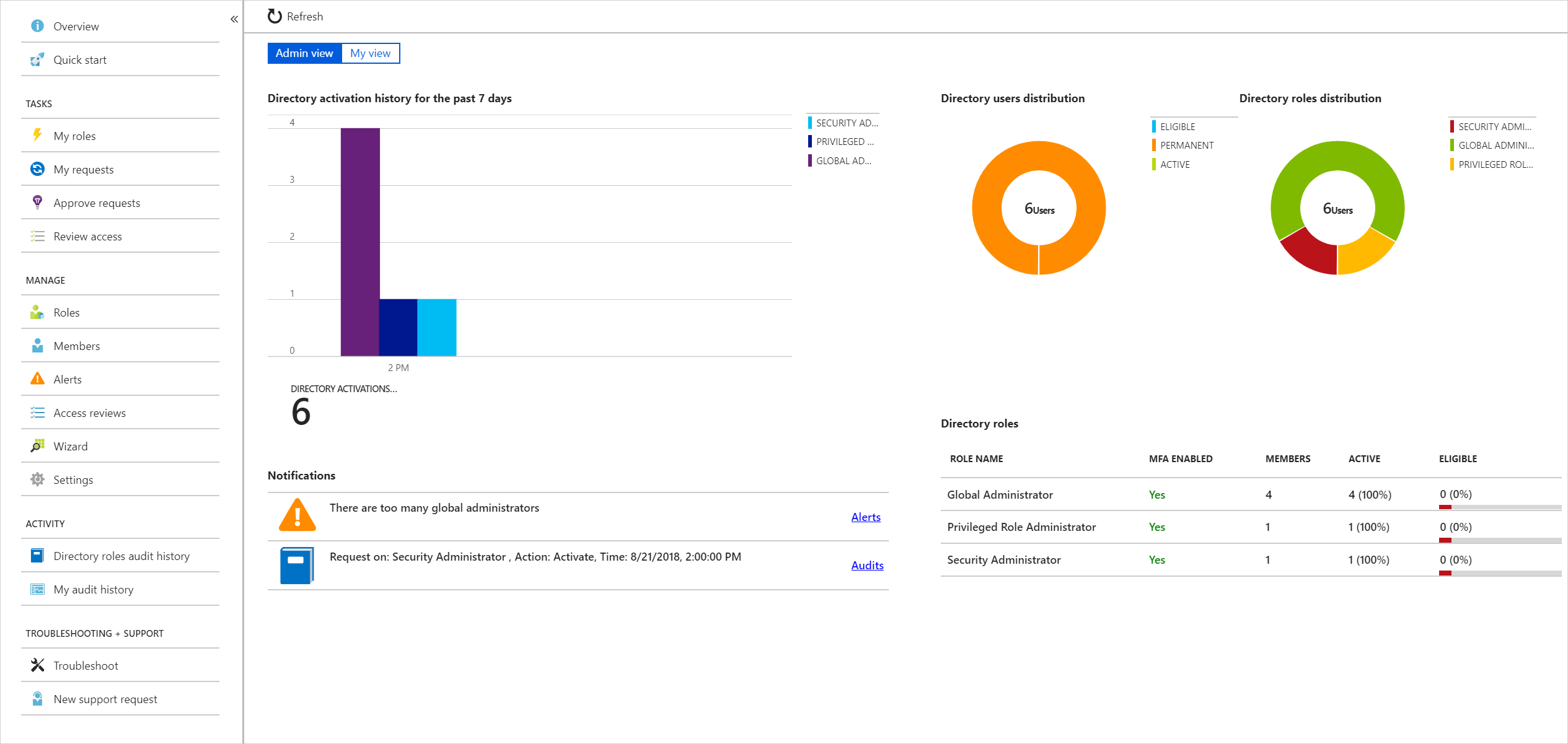Network perimeters, firewalls, and physical access controls used to be the primary protection for corporate data. But network perimeters have become increasingly porous with the explosion of bring your own device (BYOD), mobile apps, and cloud applications.
Identity has become the new primary security boundary. Therefore, proper authentication and assignment of privileges is critical to maintaining control of your data.
Your company, Contoso Shipping, is focused on addressing these concerns right away. Your team's new hybrid cloud solution needs to account for mobile apps that have access to secret data when an authorized user is signed in — in addition to having shipping vehicles constantly send a stream of telemetry data that is critical to optimizing the company's business.
Authentication and authorization
Two fundamental concepts that need to be understood when talking about identity and access control are authentication and authorization. They underpin everything else that happens and occur sequentially in any identity and access process:
-
Authentication is the process of establishing the identity of a person or service looking to access a resource. It involves the act of challenging a party for legitimate credentials, and provides the basis for creating a security principal for identity and access control use. It establishes if they are who they say they are.
-
Authorization is the process of establishing what level of access an authenticated person or service has. It specifies what data they're allowed to access and what they can do with it.
Note
Authentication is sometimes shortened to AuthN, and authorization is sometimes shortened to AuthZ.
Azure provides services to manage both authentication and authorization through Azure Active Directory (Azure AD).
What is Azure Active Directory?
Azure AD is a cloud-based identity service. It has built in support for synchronizing with your existing on-premises Active Directory or can be used stand-alone. This means that all your applications, whether on-premises, in the cloud (including Office 365), or even mobile can share the same credentials. Administrators and developers can control access to internal and external data and applications using centralized rules and policies configured in Azure AD.
Azure AD provides services such as:
- Authentication. This includes verifying identity to access applications and resources, and providing functionality such as self-service password reset, multi-factor authentication (MFA), a custom banned password list, and smart lockout services.
- Single-Sign-On (SSO). SSO enables users to remember only one ID and one password to access multiple applications. A single identity is tied to a user, simplifying the security model. As users change roles or leave an organization, access modifications are tied to that identity, greatly reducing the effort needed to change or disable accounts.
- Application management. You can manage your cloud and on-premises apps using Azure AD Application Proxy, SSO, the My apps portal (also referred to as Access panel), and SaaS apps.
- Business to business (B2B) identity services. Manage your guest users and external partners while maintaining control over your own corporate data
- Business-to-Customer (B2C) identity services. Customize and control how users sign up, sign in, and manage their profiles when using your apps with services.
- Device Management. Manage how your cloud or on-premises devices access your corporate data.
Let's explore a few of these in more detail.
Single sign-on
The more identities a user has to manage, the greater the risk of a credential-related security incident. More identities mean more passwords to remember and change. Password policies can vary between applications and, as complexity requirements increase, it becomes increasingly difficult for users to remember them.
Now, consider the logistics of managing all those identities. Additional strain is placed on help desks as they deal with account lockouts and password reset requests. If a user leaves an organization, tracking down all those identities and ensuring they are disabled can be challenging. If an identity is overlooked, this could allow access when it should have been eliminated.
With single sign-on (SSO), users need to remember only one ID and one password. Access across applications is granted to a single identity tied to a user, simplifying the security model. As users change roles or leave an organization, access modifications are tied to the single identity, greatly reducing the effort needed to change or disable accounts. Using single sign-on for accounts will make it easier for users to manage their identities and will increase the security capabilities in your environment.

SSO with Azure Active Directory
By leveraging Azure AD for SSO you'll also have the ability to combine multiple data sources into an intelligent security graph. This security graph enables the ability to provide threat analysis and real-time identity protection to all accounts in Azure AD, including accounts that are synchronized from your on-premises AD. By using a centralized identity provider, you'll have centralized the security controls, reporting, alerting, and administration of your identity infrastructure.
As Contoso Shipping integrates its existing Active Directory instance with Azure AD, you will make controlling access consistent across the organization. Doing so will also greatly simplify the ability to sign into email and Office 365 documents without having to reauthenticate.
Multi-factor authentication
Multi-factor authentication (MFA) provides additional security for your identities by requiring two or more elements for full authentication. These elements fall into three categories:
- Something you know
- Something you possess
- Something you are
Something you know would be a password or the answer to a security question. Something you possess could be a mobile app that receives a notification or a token-generating device. Something you are is typically some sort of biometric property, such as a fingerprint or face scan used on many mobile devices.
Using MFA increases security of your identity by limiting the impact of credential exposure. An attacker who has a user's password would also need to have possession of their phone or their security token generator in order to fully authenticate. Authentication with only a single factor verified is insufficient, and the attacker would be unable to use only those credentials to authenticate. The benefits this brings to security are huge, and we can't emphasize enough the importance of enabling MFA wherever possible.
Azure AD has MFA capabilities built in and will integrate with other third-party MFA providers. MFA should be used for users in the Global Administrator role in Azure AD, because these are highly sensitive accounts. All other accounts can also have MFA enabled.
For Contoso Shipping, you decide to enable MFA any time a user is signing in from a non-domain-connected computer — which includes the mobile apps your drivers use.
Providing identities to services
It's usually valuable for services to have identities. Often, and against best practices, credential information is embedded in configuration files. With no security around these configuration files, anyone with access to the systems or repositories can access these credentials and risk exposure.
Azure AD addresses this problem through two methods: service principals and managed identities for Azure services.

Service principals
To understand service principals, it's useful to first understand the words identity and principal, because of how they are used in the identity management world.
An identity is just a thing that can be authenticated. Obviously, this includes users with a user name and password, but it can also include applications or other servers, which might authenticate with secret keys or certificates.
A principal is an identity acting with certain roles or claims. Usually, it is not useful to consider identity and principal separately, but think of using 'sudo' on a Bash prompt in Linux or on Windows using "run as Administrator." In both those cases, you are still logged in as the same identity as before, but you've changed the role under which you are executing. Groups are often also considered principals because they can have rights assigned.
A service principal is an identity that is used by a service or application. And like other identities, it can be assigned roles.

Managed identities for Azure services
The creation of service principals can be a tedious process, and there are a lot of touch points that can make maintaining them difficult. Managed identities for Azure services are much easier and will do most of the work for you.
A managed identity can be instantly created for any Azure service that supports it—and the list is constantly growing. When you create a managed identity for a service, you are creating an account on your organization's Active Directory (a specific organization's Active Directory instance is known as an "Active Directory Tenant"). The Azure infrastructure will automatically take care of authenticating the service and managing the account. You can then use that account like any other Azure AD account, including allowing the authenticated service secure access of other Azure resources.
Role-based access control
Roles are sets of permissions, like "Read-only" or "Contributor", that users can be granted to access an Azure service instance.
Identities are mapped to roles directly or through group membership. Separating security principals, access permissions, and resources provides simple access management and fine-grained control. Administrators are able to ensure the minimum necessary permissions are granted.
Roles can be granted at the individual service instance level, but they also flow down the Azure Resource Manager hierarchy.
Here's a diagram that shows this relationship. Roles assigned at a higher scope, like an entire subscription, are inherited by child scopes, like service instances.

Privileged Identity Management
In addition to managing Azure resource access with role-based access control (RBAC), a comprehensive approach to infrastructure protection should consider including the ongoing auditing of role members as their organization changes and evolves. Azure AD Privileged Identity Management (PIM) is an additional, paid-for offering that provides oversight of role assignments, self-service, and just-in-time role activation and Azure AD and Azure resource access reviews.

Summary
Identity allows us to maintain a security perimeter, even outside our physical control. With single sign-on and appropriate role-based access configuration, we can always be sure who has the ability to see and manipulate our data and infrastructure.